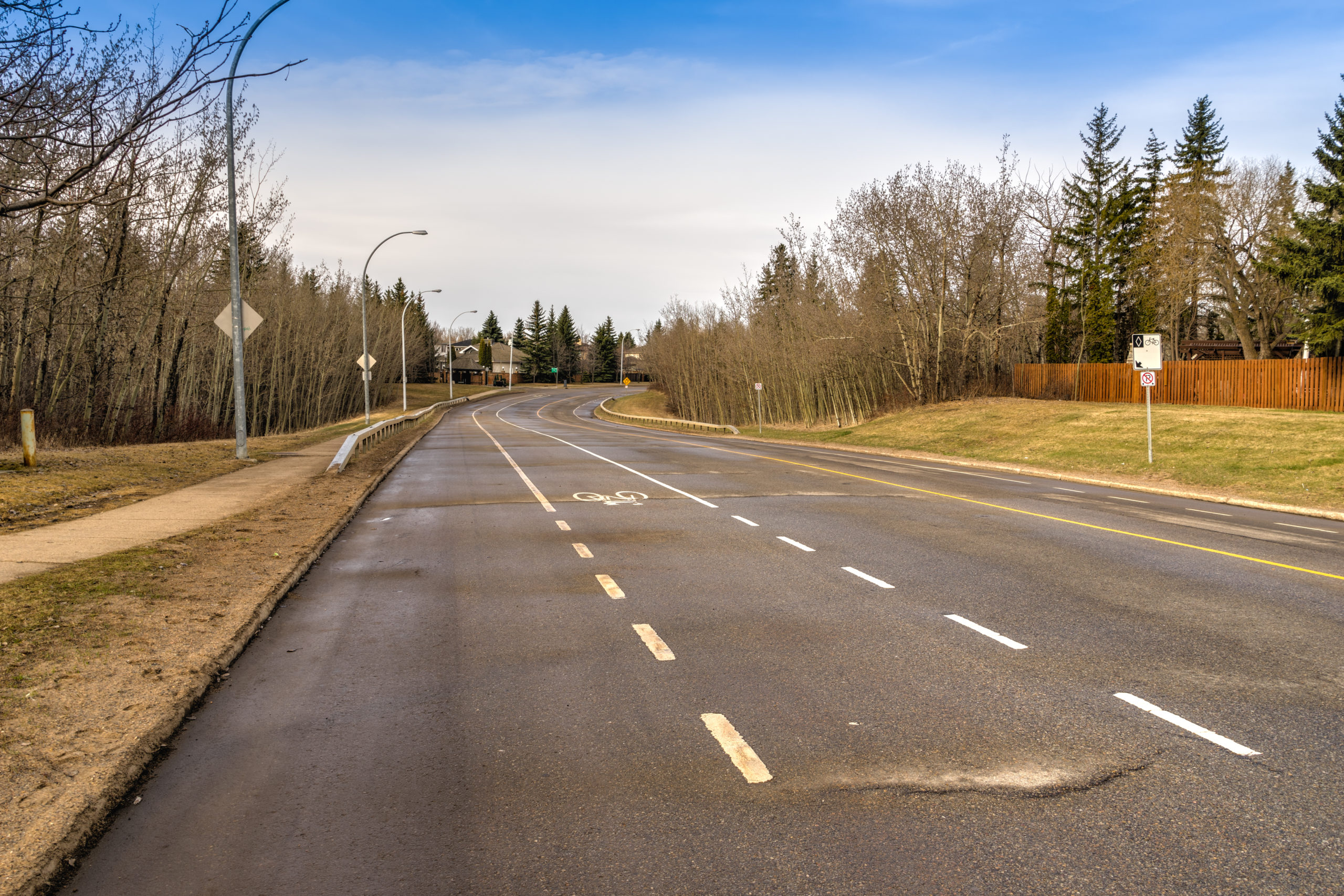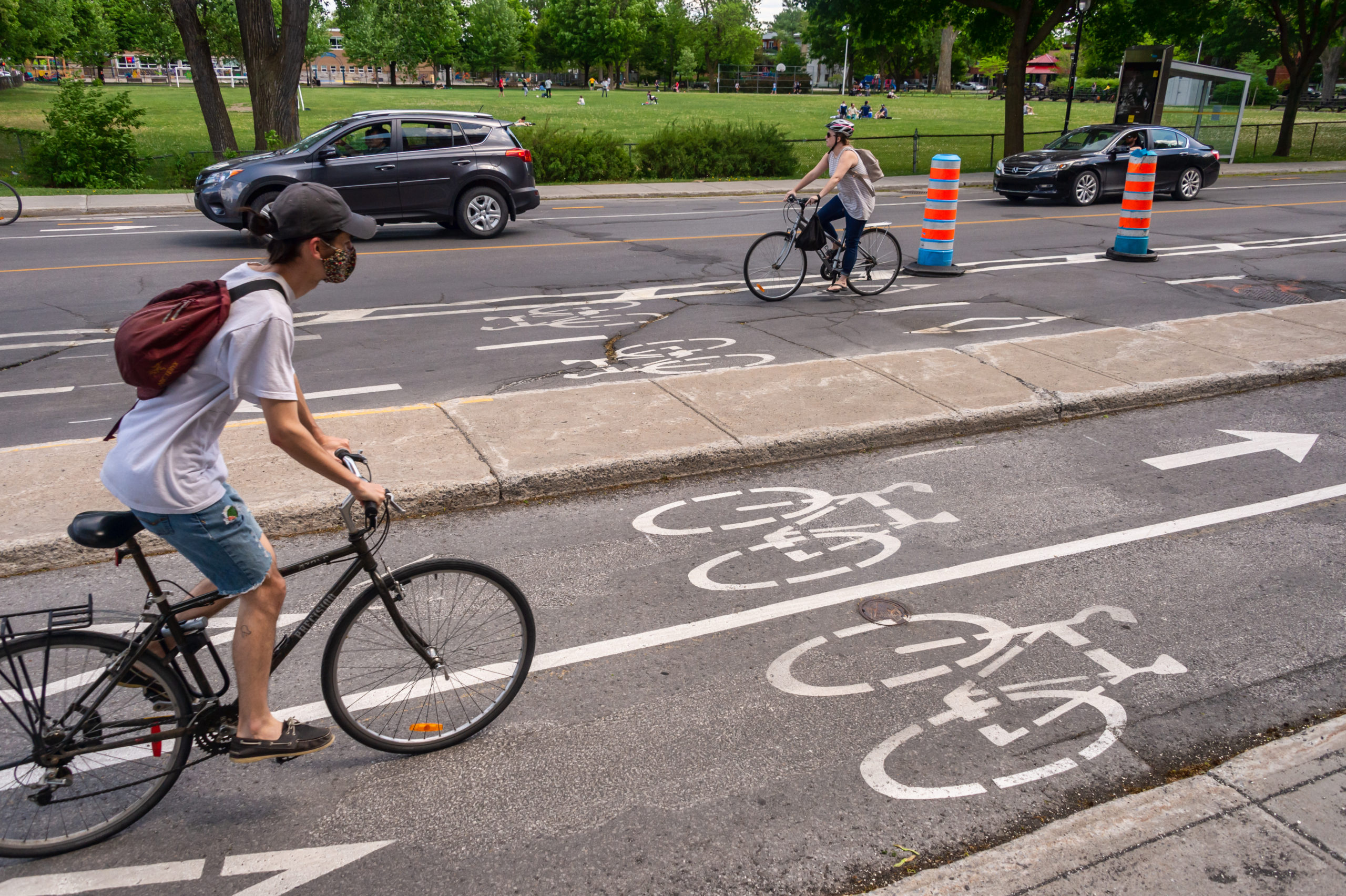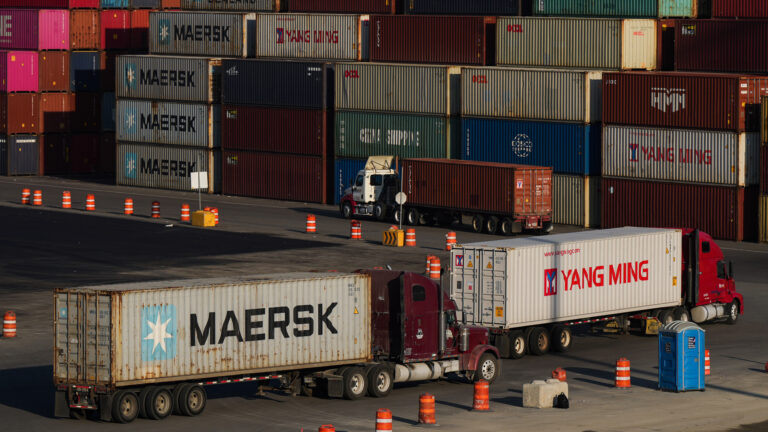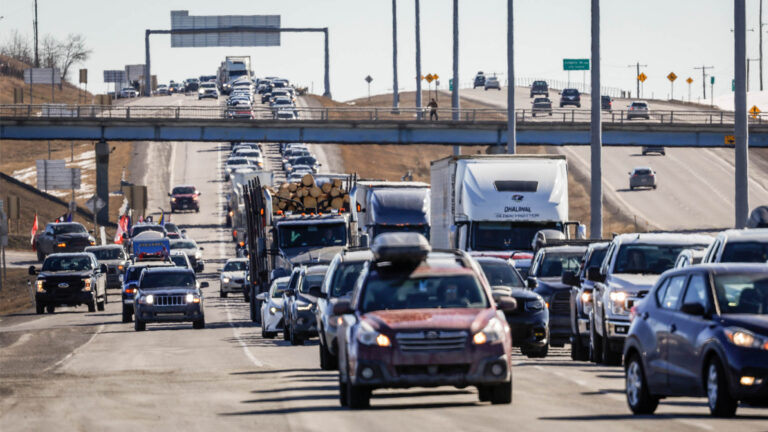Have you noticed any new bike lanes in your town or city? The federal government’s $180-billion Investing in Canada infrastructure program is channelling new funds to active transportation. The recent COVID-19 Resilience stream has further ramped up these investments, leading to a quick expansion of bike networks in particular. With this new infrastructure in place, we might ask: is this the start of a real modal shift? Are Canadians ready to expand their cycling and (with help from public transit) rely less on private cars for work, school and groceries, at least when it’s not snowing?
Under COVID restrictions, cycling has given many Canadians a lifeline by offering a safe, effective and pleasurable, self-directed way to move around. With the evaporation of car traffic early on in the pandemic and cities redistributing road space to active transport, many folks, including families with elders and young children, found streets safer and more accessible for cycling. What would it take for this to stick?
We argue that recent investments spurred or accelerated by COVID can help cycling flourish – but first consider the mountain that cycling in Canada has to climb.
In 2016, only 1.6 per cent of commuters cycled in Canada, while four out of five used a motor vehicle. The number of people cycling to work is rising – jumping 88 per cent between 1996 and 2016, faster than any other mode – but governments continue to subsidize the full costs to society of motor vehicle use and fossil fuel consumption, and Canadians produce some of the highest levels of greenhouse gas emissions per capita in the world.
Of course, Canadians might think twice about driving if its social and ecological costs were actually reflected in the price of using cars and highways. One analysis of “full cost accounting” found that if cycling cost you $1, society (costs tied to health care, infrastructure, workplace productivity and environmental degradation) pays eight cents, and if driving costs you $1, society pays $9.20. Individuals easily ignore the outsized burden of their driving for society and the environment partly because, for many, driving is simply not a choice.
How did we get here?
Canada made driving compulsory by growing its postwar towns and cities through sprawling suburbs of single detached houses framed by restricted-access highways, big box malls and oceans of free parking all made possible by cheap gasoline (after abandoning the streetcar as a compact way of organizing urban growth and development). Today, low-density suburbs built for driving are dominant and growing much faster than cycling-friendly districts near old city cores. They form the material, infrastructural basis of car culture, wherein driving becomes the normal way to commute or pick up your coffee or your kids, whereas cycling becomes a deviant, risky way to perform these things.
Politics further reinforces roads as things for driving motor vehicles, as governments bail out automotive and fossil fuel industries, while car-driving suburbs decide national elections that send MPs to Ottawa who can’t imagine mobility otherwise.
Regional political cultures where oil, gas and large personal trucks symbolize the good life, particularly in Alberta, Saskatchewan and B.C., pose another barrier for cycling expansion. In a 2018 Angus Reid survey, these regional differences mattered more statistically when it came to whether or not Canadians think bike lanes make a community a better place to live than education, income, gender, age and frequency of driving.

So how can new investments by Canada in active transportation expand the cycling franchise, and move the needle on cycling’s share of everyday travel? In short, they need to break up the unjust monopoly the car has over the road.
Canada must create more space on the road for cyclists at the expense of motorized vehicles, through new dedicated bike lanes and traffic-calming measures that slow down or exclude driving. Without redistributing street space for cyclists and pedestrians at the cost of driving and safely separating this space, Canada will continue to exclude most people from cycling, in particular women, children, older folks and anyone who cannot afford to live in cycling-friendly areas adjacent to urban cores, where good bike routes are accelerating gentrification. These policy prescriptions are not esoteric; on the contrary, they are well established in cycling scholarship across disciplines. While the research is settled, policy action is elusive.
Policy-makers who remain unmoved by academic research should visit the places where cycling’s modal share has already exploded because of dedicated, relatively inclusive cycling networks. We are not talking about Paris, Vienna or Copenhagen. We are talking about neighbourhoods across Canada – like Grandview-Woodlands in Vancouver (17.1 per cent), Wolseley and West Broadway in Winnipeg (13.9 per cent), Old Ottawa South (16.9 per cent), La Petite-Patrie in Montreal (21.6 per cent), South End Halifax (9.4 per cent) and many others – that already enjoy “European” levels of cycling.

And then there’s Victoria, B.C., a national leader where cycling commands a 17 per cent modal share. I (Tamara) moved here over a year ago from Paris, where biking was a huge part of my family’s life. We weren’t willing to give that up. As a family of four with two young kids we have been thrilled to discover that we can live here car-free thanks to investments in a growing bike network. This network is the product of political vison, advocacy, regional planning and dedicated infrastructure funds; it’s leading to a culture shift. Cycling in Victoria isn’t just for the urban core – the network stretches far into the suburbs and peri-urban areas. The cycling paths in Saanich, View Royal and Esquimalt are just as busy as Victoria’s. Moreover, much of the early opposition has dissipated as the cycling network has proven to be good for business and tourism alongside health and wellbeing.
This momentum could be transformative. How do we get there? Local governments need dedicated cycling infrastructure funds (not project-based) to accelerate and expand networks. We need our educational and recreational systems to support a culture of cycling, and bike subsidy programs to make sure bikes are accessible to all. At present there have been some tentative e-bike subsidy programs in places like British Columbia and Edmonton. These could be expanded. Moreover, we could learn from places like France, where there is a Cycling Kilometric Allowance for commuters cycling to work. Those using their own bike receive €0.25 per kilometre cycled and up to €200 annually.
And, finally, we need to ensure that provincial/territorial policies and guidance are up-to-date for cycling infrastructure and that the regulations make sense for both rural and urban communities. In conversations with municipal planners and engineers, these barriers are commonly identified. With our carbon commitments looming, we haven’t a moment to lose.
Photo: A bike lane in Victoria, B.C. in 2019. Shutterstock.com, by JL IMAGES












